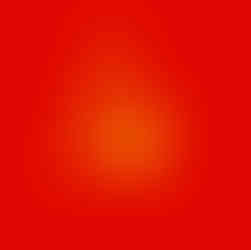The Start of the “Space Age”
- Isabella Roquette
- Oct 11
- 3 min read
Hello Universe!
Today, I’m going to discuss October 4, 1957, a historic day for humanity, marking the beginning of space exploration.
Soviet Union
During this era, the Soviet Union was in a political and technological Space Race against the United States, begun by each country's declaration to launch artificial Earth satellites during the International Geophysical Year, a solar period the International Council of Scientific Unions declared would be ideal for the launching of artificial satellites to study Earth and the solar system. Sergei P. Korolev led the effort to design and build the first artificial satellite and the rocket to launch it. Sergei P. Korolev led the effort to design and build the first artificial satellite and the rocket to launch it. They planned to use the R-7 rocket, which had been built as an intercontinental ballistic missile, to place a scientific satellite in orbit by 1957. The development of the complex satellite fell behind schedule, and Korolev rapidly began designing and building a much simpler satellite. The R-7 rocket had suffered catastrophic failures during its development; however, a final test flight in September 1957 was successful.
Sputnik I
On October 4, 1957, the Space Age was inaugurated with the Soviet Union’s launch of the world’s first artificial satellite, Sputnik I. They launched this satellite from a site in Soviet Kazakhstan known as the Baikonur Cosmodrome. Weighing 184 pounds and with a diameter of 22 inches, it orbited the Earth every 90 minutes and traveled at 18,000 miles an hour. It held no scientific instruments, only a transmitter that sent out a signal that radio operators worldwide could monitor. Sputnik’s orbit deteriorated and burned in the atmosphere, as expected, in January 1658.
Sputnik II
Less than a month after Sputnik I’s launch, on November 3, 1957, another R-7 rocket lifted off from Baikonur carrying a dog named Laika, the first animal to orbit the Earth. The life equipment needed for this animal made the spacecraft much heavier than its predecessor, weighing 1,121 pounds. The engineers had not designed an environmental control system to support a lengthy mission or developed a system to recover Laika, meaning she only survived for a few hours after reaching orbit. This insufficient preparation was due to a lack of adequate development time. Sputnik II burned during reentry in April 1958.
Sputnik I Sputnik II
United States

In 1955, the White House announced its plan to launch an Earth-orbiting satellite for the IGY. After reviewing various proposals, the Naval Research Laboratory’s Vanguard proposal was chosen to represent the U.S. The Sputnik launch caught the American public and the U.S. government off guard. It created fear in the public as they suspected this achievement implied the capability to launch ballistic missiles that could carry nuclear weapons. This fear increased as Sputnik II was launched on November 3, marking a significant achievement as it carried the first dog into space. The United States Government pursued an alternative to the initial Vanguard project led by the Army Redstone Arsenal Team and the Jet
Propulsion Laboratory. This was the Explorer I, which was carried into orbit by a Juno Rocket. The Explorer was launched on January 31, 1958, carrying a small scientific payload that went on to discover magnetic radiation belts around the Earth, named after the man who discovered them, Van Allen. The Explorer I continued to record and transmit data until May 1958, when its batteries died. The Sputnik launch led to the creation of the National Aeronautics and Space Administration, which opened on October 1, 1958.

Aftermath
The Soviet Union orbited animals again nearly three years later, but this time returning the entire animal crew to Earth, elaborating on the preparation for a human spaceflight. The competition between the United States and the Soviet Union led to many firsts in space exploration, including the first man and woman in space, as well as the first astronauts to walk on the moon.
The launch of Sputnik I and the beginning of the Space Race marked the start of an era of discovery, innovation, and analysis that continues to flourish and evolve as we uncover new aspects of the universe every day. We recently commemorated the 68th anniversary of the launch of Sputnik I, on October 4, a historic day that serves as a reminder of the start of the Space Age and the numerous advancements and developments it has led to.
.png)






